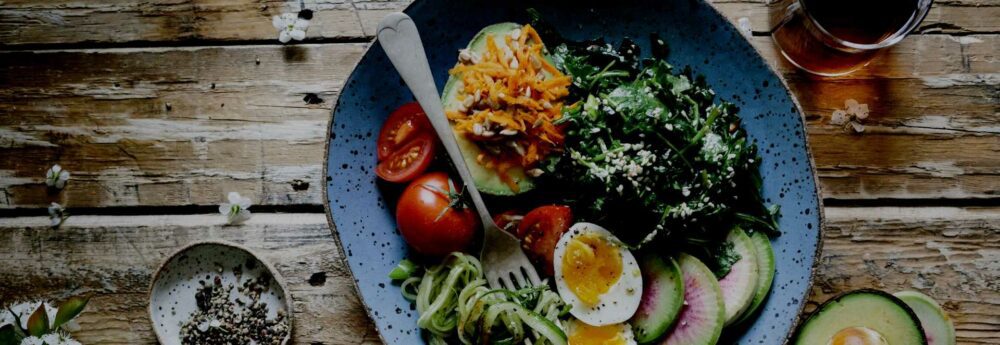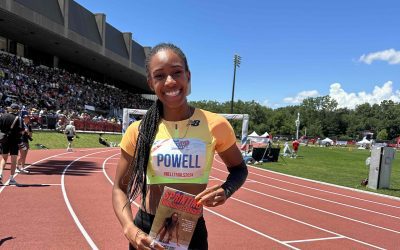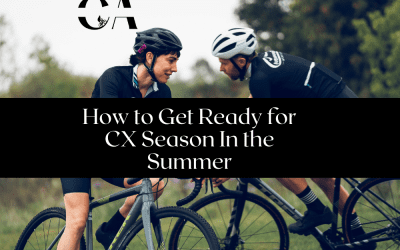Ready for the second installment of Habits for Highly Effective Athletes? (If you didn’t read the first about Staying In Your Lane, head back to last week’s post to catch up.) This week, I wanted to hit a topic that’s hugely important to me: nutrition. That doesn’t mean just on the bike or run, it means the nutrition for the rest of your day as well.
I tell this story a lot. When I first started researching for Fuel Your Ride and interviewing pro athletes, despite some being raw vegans, some being Paleo and some following a more traditional ‘athlete’ diet, they actually all ate pretty similarly. Mo Bruno Roy read the book and tweeted that she and Jeremy Powers ate pretty much the same meals, despite their vegan/meat-loving preferences. That’s because they all aim for quality carbs in the form of veggies plus some fruit/starch/easy-to-digest carbs timed around training, healthy fats like avocados, and clean protein (the main difference was that for meat eaters, this was simply chicken/fish/beef, while the vegan and vegetarians interviewed added things like seeds, nuts, beans, and pea or hemp protein instead).
Moral of the story? The top athletes are all following this simple habit: Eating real, whole foods that work for them, plus fueling for optimal training. Pretty simple, right? Apparently not, because I see a ton of athletes falling victim to crazy diets, weird food bugaboos, and poor in-ride or in-run fueling. Let’s dive in.
Eat real, whole food that works with your physiology
First thing’s first. Let’s just discuss the fact that what you eat while training is such a tiny, tiny part of the story. What you’re eating off the bike in day-to-day life makes a much bigger impact on your training in the long term than what you’re eating while pedaling. I see a ton of young athletes doing the all-cereal-all-the-time thing (or the ‘I only eat things that are white’ diet), and those are almost always teh athletes that end up sick, not performing as well, or with deficiencies in certain nutrients. Make your meals focus on real, whole foods, and hit those main macronutrients: whole carbs like veggies and some starches or rice, plus a clean protein and a healthy fat. Boom. (Need inspiration? Watch this easy how-to video on the art of the delicious big salad here.)
Every high level athlete I’ve ever eaten a meal with—and I’ve hung out with a lot—will opt for that formula 90% of the time.
Don’t be afraid to change what’s not working for you
Just because your teammate is gluten-free doesn’t mean you have to be. (See Habit #1.) But if you notice that your stomach feels bloated or you’re super gassy every time you eat a baguette, that may be a sign that the bread might need to be shelved for a while. Make small adjustments to your diet and try to figure out what formula best works for you. It won’t be the same as the girl riding next to you—at least, not 100%.
I’m NOT a fan of food tracking, nor are any of the successful athletes I know. But many of them have been known to track food for short periods of time, especially when they’re feeling ‘off,’ in order to see patterns of certain foods making them feel certain ways, or to make sure that they’re taking in enough protein/fat/carbs/calories. It’s a great way to tailor your eating to your needs—just don’t feel like you need to do it forever.
Fuel your training adequately
One mistake I see unsuccessful athletes make constantly is to use the bike or the run as their dieting time. As in, they head out on a ride or run and either don’t eat/drink anything, or severely underfuel. This was absolutely me in my early athletic years, up to and including my first Ironman. My time sucked because when I got to the run after a great bike, I was already severely dehydrated and bonked, though that didn’t become clear until mile 5 when I started feeling a little less than amazing, and by mile 13, when I was dry heaving as I tried the exercise in futility of trying to come back from that state. It didn’t work. I finished, but my time was nowhere near what I wanted it to be. (More Ironman mistakes…)
Last summer, on significantly less training hours heading into the race, I had my nutrition dialed, and handily improved my time by over 3 hours. That’s the power of good nutrition.
(Speaking of Ironman fueling, I have a video on that right here!)
Last note: Guys, Fuel Your Ride is only $2.99 for Kindle. It’s got waaaaay more info than I included in here, and it’s an easy read. Highly recommend if you’re new to the athlete nutrition game. And if you want even more personalized help, book a consult with me to chat about all things nutrition and training!
About the Habits for Highly Effective Athletes Series: Traveling with a lot of athletes at all different levels in the last decade, and being one in a lot of different scenarios and styles of racing, interviewing hundreds of pro racers and coaches, living with pros (including my husband, a pro MTBer and a great coach!), getting my coaching and nutrition certifications and generally studying the ways that athletes thrive—and don’t thrive—has given me a lot of food for thought this year. So, I decided I wanted to work on a series of articles on here highlighting some of the commonalities that I’ve noticed that the highest achievers in sport are consistently doing, whether it’s a race week, a training camp or just day-to-day life.
Before you go… want a free 7-day guide to healthy habit change? Sign up here!






